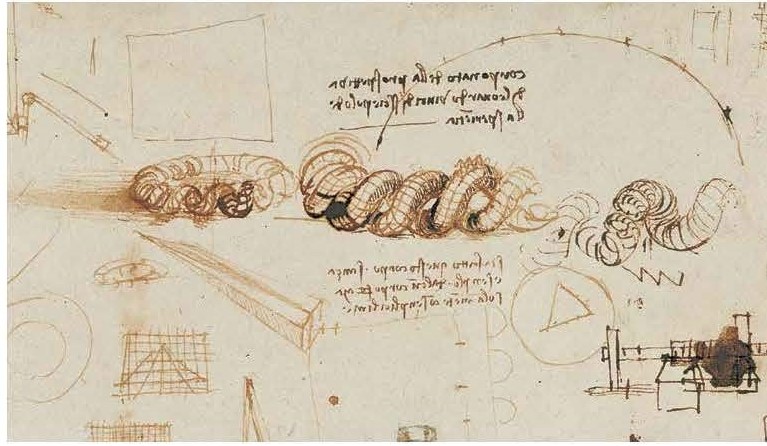The Mindful Mona Lisa: Symmorphosis in All Things

IN conversation yesterday with a retired Cambridge University professor of biology and systems physiology I learned the word “symmorphosis” which is defined as “the regulation of biological units to produce an optimal outcome.”
Interestingly, he mentioned this in response to my question whether the embroidery in the neckline of the Mona Lisa’s dress reminded him of anything in science.
My question triggered his memory of a 1995 symposium at Ascona, Switzerland in which the concept of symmorphism was discussed. Because each “link” in the “chain” that makes up a certain biological process (like oxygen uptake) is connected to the others, each will have similarity in certain limits or parameters. For example, the blood will not circulate faster than the lungs can deliver oxygen. Conceptually this resembles interlocking gears, where each gear must advance by the same number of teeth in order to stay connected.
Douglas Hofstadter has recently expanded on his idea of the “strange loop” to include analogy as a core process of consciousness. The human brain and mind work by way of pattern and comparison, allowing us to apply existing knowledge to new situations. A classic example is Newton’s apple: what could have remained a piece of fruit was transformed by analogy into the physics of gravitation.
Importantly, analogy is not just a learned symbolic technique (like long division) but is intrinsic to how the brain naturally processes information. We are, in a sense, analogic entities built on a biological platform which is interwoven with a multiplicity of natural processes. This is how “strange loops” or self-referential and self-modulating systems with non-linear cyclicality (like the brain's Default Mode Network) can form and evolve. Symmorphosis helps demonstrate that analogy is not just a symbolic capacity of intelligence but a property required of any self-balancing process (such as morphogenesis).
Does the Mona Lisa demonstrate symmorphosis? Most certainly, if we accept a broader and more analogic definition of symmorphosis which can apply to the interaction of rivers with geology, our own interpretive eye contact with the sitter, the relation of engineering infrastructure (the bridge) to the present lived technological environment (the garment), and indeed the microcosm/macrocosm analogy itself. Even the behavior of the cells of the viewer’s brain is analogically symmorphic across time with the behavior of the cells of Leonardo’s.
Analogies between the Mona Lisa's hair (and garments) and water vortices, the rivers and veins, and so forth are widely accepted. Leonardo stated that his overall method in art and science was “comparazione” or “comperatione” i.e. comparison. It is certainly logical and consistent to seriously consider the possibility that the bridge in the Mona Lisa's landscape is also an analogy, and one which harmonizes with the artistic intent of the others.
Applied category theory (ACT) is also based on comparison and analogy (to form categories) and isomorphism (applying rules to sets) to map complex systems behavior in time. Perec uses ACT in Life, a User’s Manual to create a novel patterned as a network system of metamorphoses. Hofstadter also grounds meaning in isomorphism. Integrating symmorphosis in this context can further clarify the systems biological characteristics of human and other natural fabrics we are trying to create and understand – with Leonardo’s help.
Next week: back to mindfulness!
